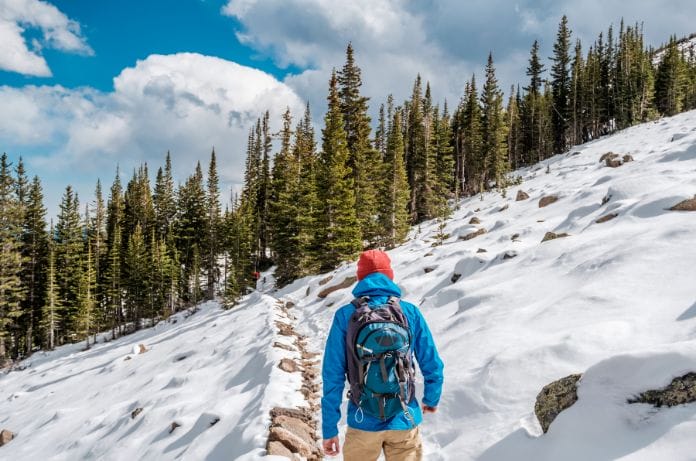While enjoying a hike during the winter is a fun adventure, it could quickly become disastrous without the right clothing. And the last thing you want is to suffer from the bitter cold during what’s supposed to be a fun activity. Luckily, there are ways to dress for warmth to help you stay safe and comfortable on a winter trail.
Upper Body
While how much and what you wear depends on the weather and how long you’ll be on the trail, there are a few general rules to follow when insulating your upper body.
There are light, medium, and heavyweight thermals that you can wear depending on how much the temperature drops, with heavyweight thermals being the warmest. Your base layer should be close to your skin but not so tight that it restricts circulation, as circulation is a critical part of keeping your extremities warm.
You’ll also want this layer to be moisture-wicking because you will sweat, and if you get snow close to your body, you want it to evaporate quickly. Ideally, you should wear merino wool on hikes, as it has excellent moisture-wicking properties as opposed to cotton, which gets damp and heavy.
Next is your insulating layer, which traps warm air and keeps it close to your body. The trapped air will become warm due to your body heat, and you don’t want that warm air to escape. Luckily, layers of synthetic down or fleece can help you. Just remember that synthetic holds up better than down in wet and humid temperatures, so check the weather before you choose.
Lastly, your weatherproof shell protects you and your clothing from the elements, like rain, wind, or snow. You want this layer to be comfortable and breathable so that you can still move, and it will keep your base and insulating layers dry.
Lower Body
Your lower body will need the same base layer and weatherproof shell that your upper body needs, and the same general rules apply. The difference is you’ll also need warm hiking socks and waterproof shoes or boots. You can choose to layer your socks or pick high-quality merino or synthetic wool. Some opt to wrap plastic bags around their feet to keep out rain and snow, but a tight-sealed hiking boot will do. You may also want to consider tucking your socks into your pants to form a better weatherproof barrier.
Essential Accessories
Depending on how much snow you’ll be walking through, snow goggles can help prevent snow blindness. Additionally, you lose a lot of heat through your head, so keep your face and head warm with neck gaiters and or a winter hat, and many neck gaiters protect your ears as well.
If you’ve learned anything by reading this article, you know that the best way to dress for warmth on a winter hike is to layer! This includes your gloves; light to midweight fleece gloves covered with weatherproof mittens as a shell will keep your hands warm. Remember that your extremities are the most vulnerable to hypothermia, so keep your body moving and stay warm!






